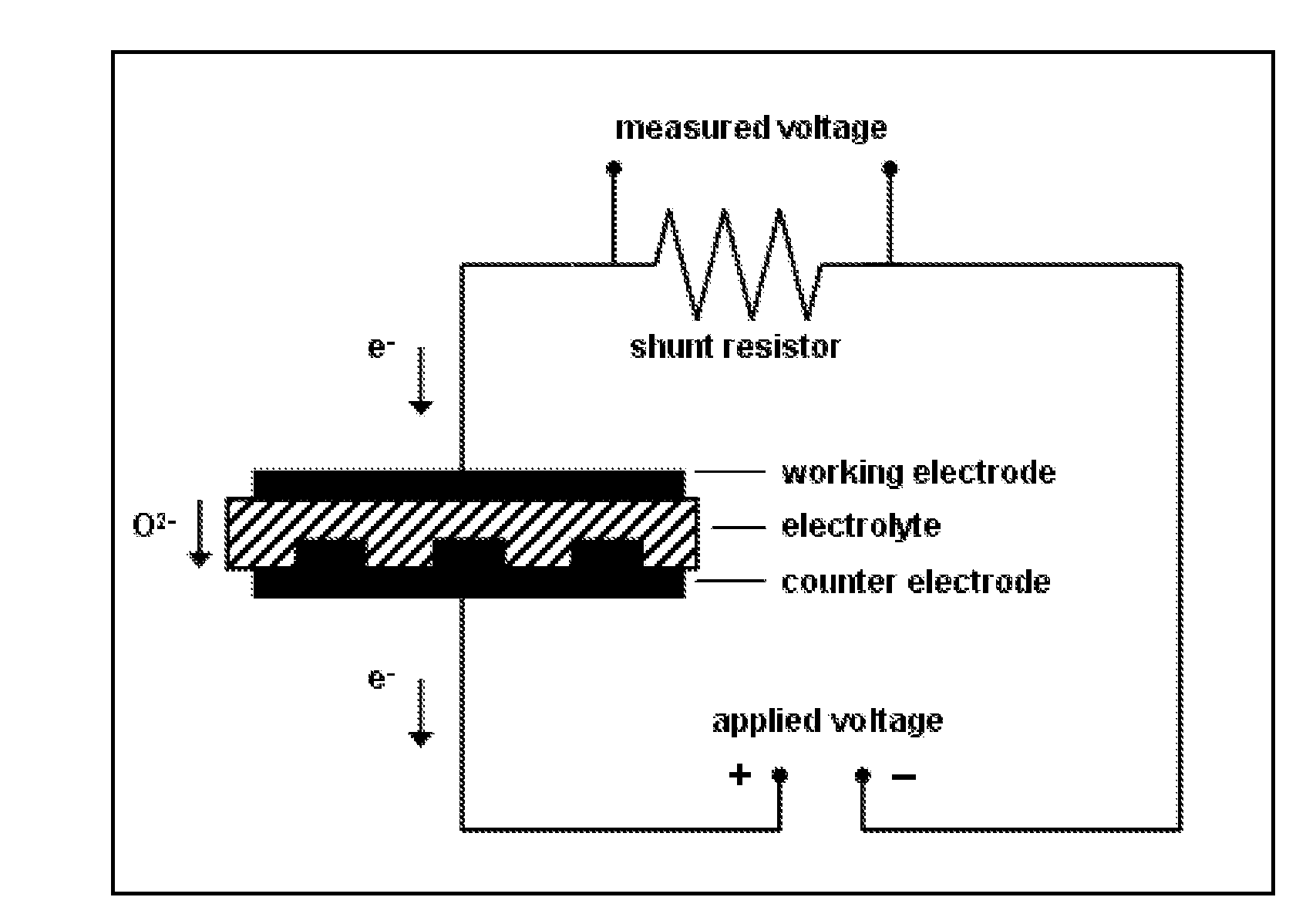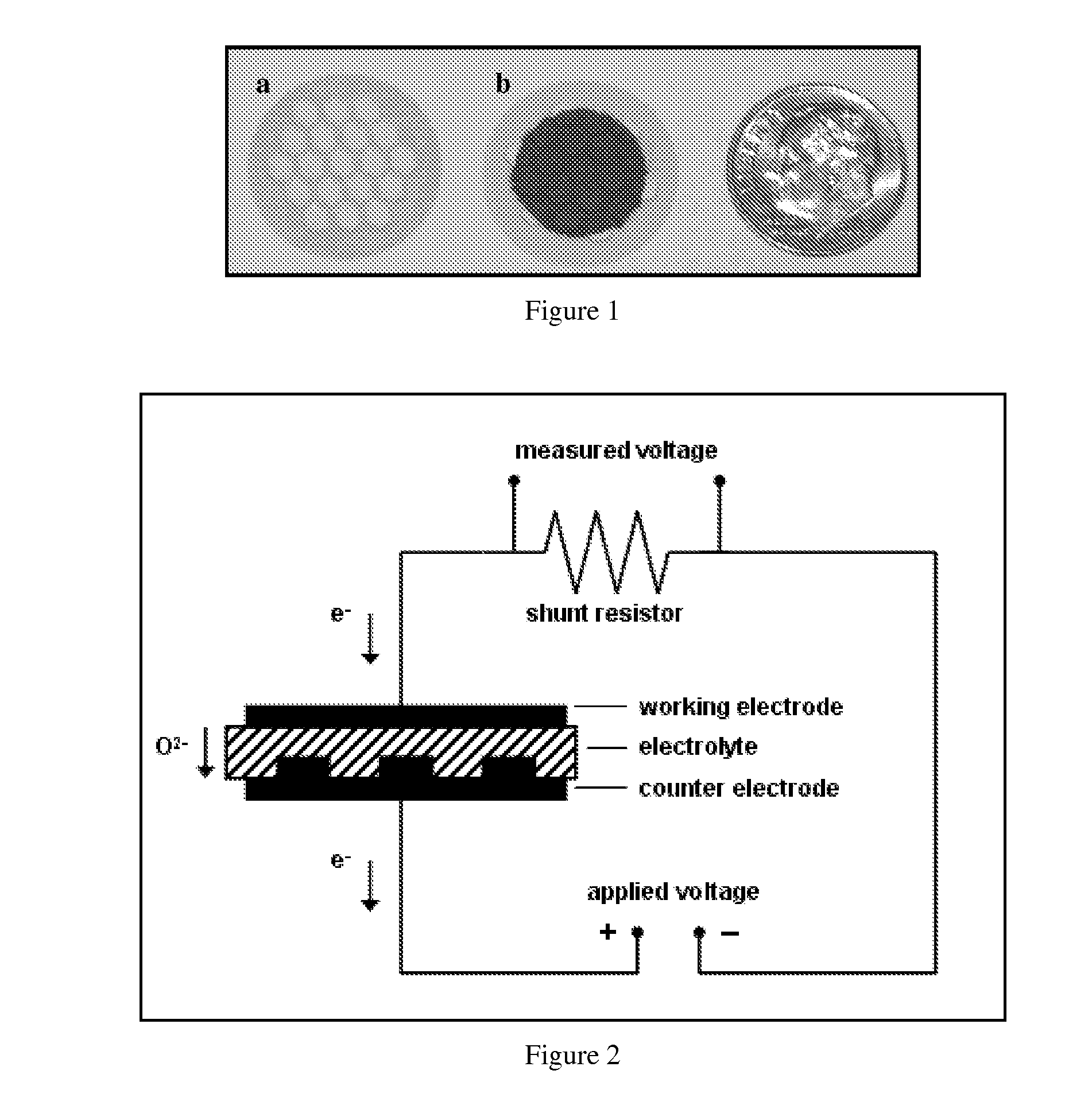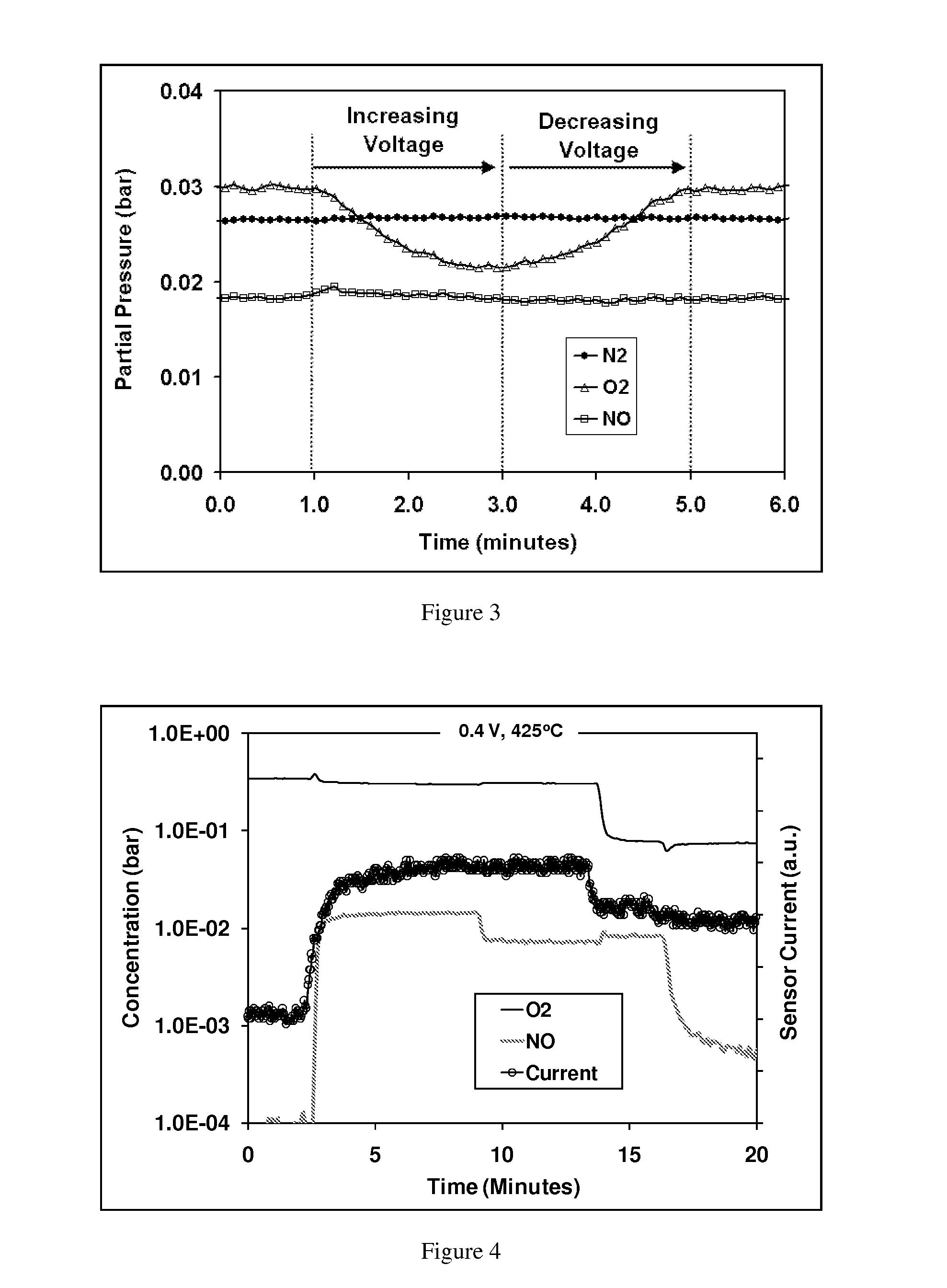Amperometric Electrochemical Cells and Sensors
an electrochemical cell and sensor technology, applied in the field of amperometric ceramic electrochemical cells and sensors, can solve the problems of generating a greater current and extremely fast mechanism, and achieve the effects of less dependence on oxygen partial pressure, faster response, and enhanced sensitivity to both nox
- Summary
- Abstract
- Description
- Claims
- Application Information
AI Technical Summary
Benefits of technology
Problems solved by technology
Method used
Image
Examples
example 1
Sensor Fabrication and Testing Method
[0070]Symmetrically electroded electrolyte membrane discs were used to test the fundamental sensing properties of this invention and confirm the sensing mechanism, as will be described in Examples 2 through 7. Planar electrochemical cells were fabricated using a gadolinium doped ceria (Ce0.9Gd0.1O1.95, GDC) electrolyte membrane with (La0.60Sr0.40)(Co0.20Fe0.80)O3-δ (LSCF) electrodes applied to opposite sides. The electrolyte membrane in a disc form, shown in FIG. 1a, consists of a self-supporting electrolyte membrane of GDC, with an effective thickness of 40 microns. As disclosed in U.S. patent application Ser. No. 11 / 109,471 (published Oct. 19, 2006 as US 2006 / 0234100 A1), incorporated herein by reference in its entirety, the membrane is mechanically supported by an additional thicker doped ceria layer, in a perforated design approximately 100 microns thick which is simultaneously sintered with the membrane layer. As shown in FIG. 1b, the active...
example 2
Demonstration of Sensing Mechanism
[0072]In this example, experiments were conducted to demonstrate the disclosed sensing mechanism of this invention. Specifically, experiments were designed to show that NOX is not reduced during the application of a voltage; only oxygen is reduced at the sensing electrode, the oxygen ions then being re-oxidized to molecular oxygen at the counter electrode. For these experiments, a sensor was fabricated as described in Example 1. The sample was loaded into a test chamber, such that the sensing and counter electrodes were sealed from one another, with the counter electrode being exposed to air, and the sensing electrode exposed to the gas stream being sensed. The gas composition was monitored downstream of the sensor to determine the effect of the electrochemical cell on the gas composition. During a sweep in the applied voltage, a corresponding drop in oxygen concentration was observed, indicating that oxygen was being pumped through the cell (see FI...
example 3
Demonstration of Response Sensitivity to NOX
[0074]In this example, the response characteristics of the sensor to NO and NO2 were evaluated, and experiments were conducted to demonstrate that the sensing mechanism is effective over a range of applied voltage, exhaust gas atmospheres, and temperatures, and is effective for NO and NO2. A sensor was fabricated as described in Example 1. The sensor was then loaded into a test chamber such that both electrodes were exposed to the same gas environment. In this configuration, the responsiveness of the sensor at 425° C. to varying atmospheres at varying applied voltages is shown in FIG. 6, in the form of Tafel plots. Two different baseline gases were examined for these tests:[0075](1) the λ=1.2 gas contained 3.3 vol % O2, 11.3 vol % CO2, 2 vol % H2O, the balance being an inert gas (N2).[0076](2) the λ=1.7 gas contained 8.3 vol % O2, 8.1 vol % CO2, 2 vol % H2O, the balance being an inert gas (N2).
[0077]For each baseline gas, the effect of NO...
PUM
 Login to View More
Login to View More Abstract
Description
Claims
Application Information
 Login to View More
Login to View More - R&D
- Intellectual Property
- Life Sciences
- Materials
- Tech Scout
- Unparalleled Data Quality
- Higher Quality Content
- 60% Fewer Hallucinations
Browse by: Latest US Patents, China's latest patents, Technical Efficacy Thesaurus, Application Domain, Technology Topic, Popular Technical Reports.
© 2025 PatSnap. All rights reserved.Legal|Privacy policy|Modern Slavery Act Transparency Statement|Sitemap|About US| Contact US: help@patsnap.com



